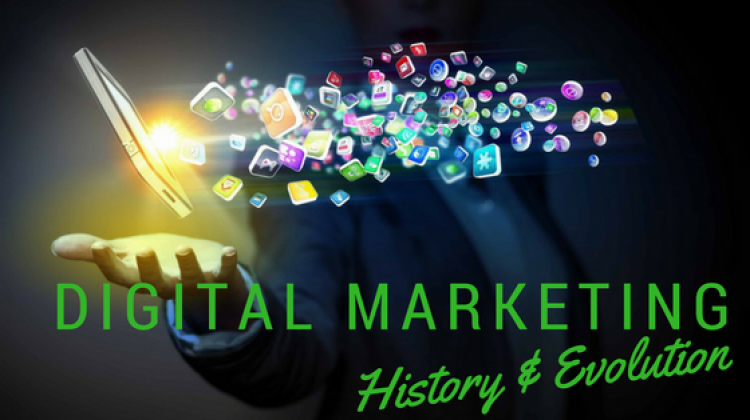Unveiling the Past: History of Digital Marketing
The digital landscape we navigate today, saturated with targeted ads, interactive content, and sophisticated marketing strategies, has a fascinating history. From humble beginnings to the complex ecosystem we know today, digital marketing has undergone a remarkable evolution, mirroring the advancement of technology itself.

Let’s embark on a journey through the captivating history of digital marketing:
The Early Days (1970s-1980s):
- Birth of the internet: The 1970s witnessed the birth of the internet, laying the groundwork for what would become the digital revolution.
- Email marketing pioneers: The first email marketing campaign was sent in 1978, marking the beginning of a new era in communication and marketing.
- Rise of online communities: Online forums and bulletin boards emerged in the 1980s, fostering early online communities and providing platforms for brands to engage with their audiences.
The Dawn of the Digital Age (1990s-2000s):
- Rise of the World Wide Web: The invention of the World Wide Web in 1989 opened up a new frontier for digital marketing, with websites becoming the primary platform for online interaction.
- Search engines and SEO: The launch of search engines like Archie (1990) and AltaVista (1995) marked the beginning of the search engine optimization (SEO) era.
- The first clickable banner ad: In 1994, the first clickable banner ad was displayed on Wired magazine’s website, ushering in the age of online advertising.
- Email marketing boom: Email marketing gained momentum with the rise of email service providers like Hotmail (1996) and Yahoo! Mail (1997).
The Age of Social Media and Mobile Marketing (2000s-2010s):
- Social media revolution: The rise of social media platforms like Facebook (2004) and Twitter (2006) transformed digital marketing, allowing brands to connect with their audiences on a more personal level.
- Mobile marketing takes off: The widespread adoption of smartphones and mobile internet fueled the rise of mobile marketing, requiring businesses to adapt their strategies to cater to the on-the-go audience.
- Content marketing gains traction: Content marketing became increasingly important as businesses recognized the value of creating valuable and informative content to attract and engage their target audiences.
- Rise of data analytics: Data analytics tools and platforms gained prominence, allowing marketers to track campaign performance, measure ROI, and gain valuable insights into their audience behavior.
The Modern Era of Digital Marketing (2010s-Present):
- Personalization and automation: Digital marketing strategies have become increasingly personalized, leveraging user data to deliver targeted messages and experiences.
- Rise of AI and machine learning: Artificial intelligence (AI) and machine learning are increasingly being used to personalize marketing campaigns, automate tasks, and optimize advertising campaigns.
- Focus on customer experience: Businesses are placing greater emphasis on creating seamless and personalized customer experiences across all touchpoints, from website interactions to social media engagement.
- The rise of influencer marketing: Partnerships with influential individuals are becoming a popular strategy for brands to reach new audiences and build brand awareness.

Looking Ahead:
The future of digital marketing is likely to be shaped by emerging technologies like virtual reality, augmented reality, and blockchain. Personalization and data-driven decision making will continue to play a crucial role, while the focus on creating engaging and valuable content will remain paramount.
In conclusion,
the history of digital marketing is a captivating story of innovation, adaptation, and constant evolution. Understanding the journey of this dynamic field provides valuable insights into the present and helps us anticipate the exciting possibilities that lie ahead. As technology continues to evolve, so too will the strategies and tactics of digital marketing, ensuring an ever-transforming landscape that keeps marketers on their toes and audiences captivated.


